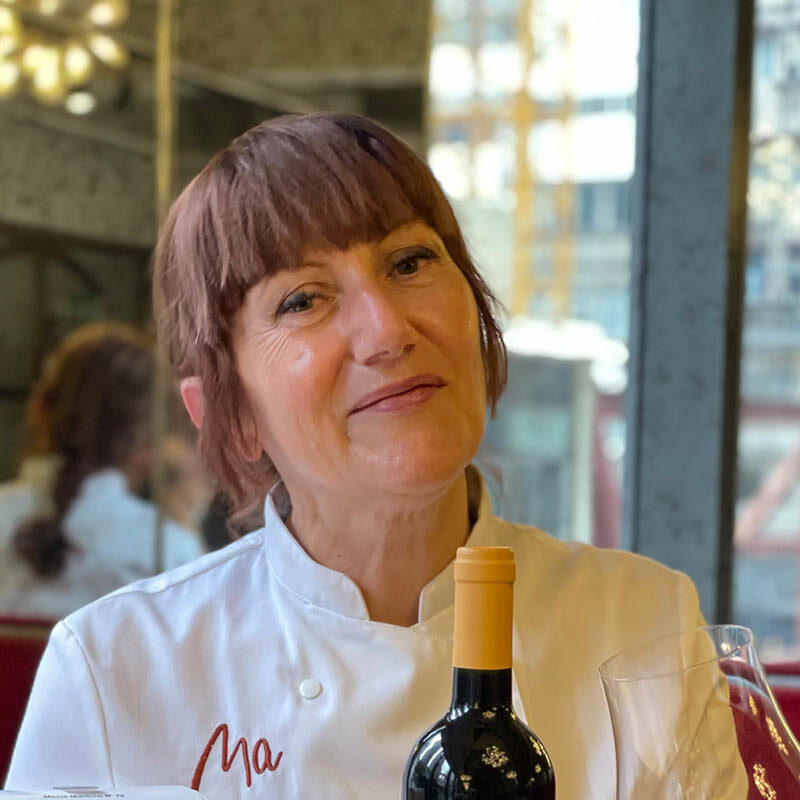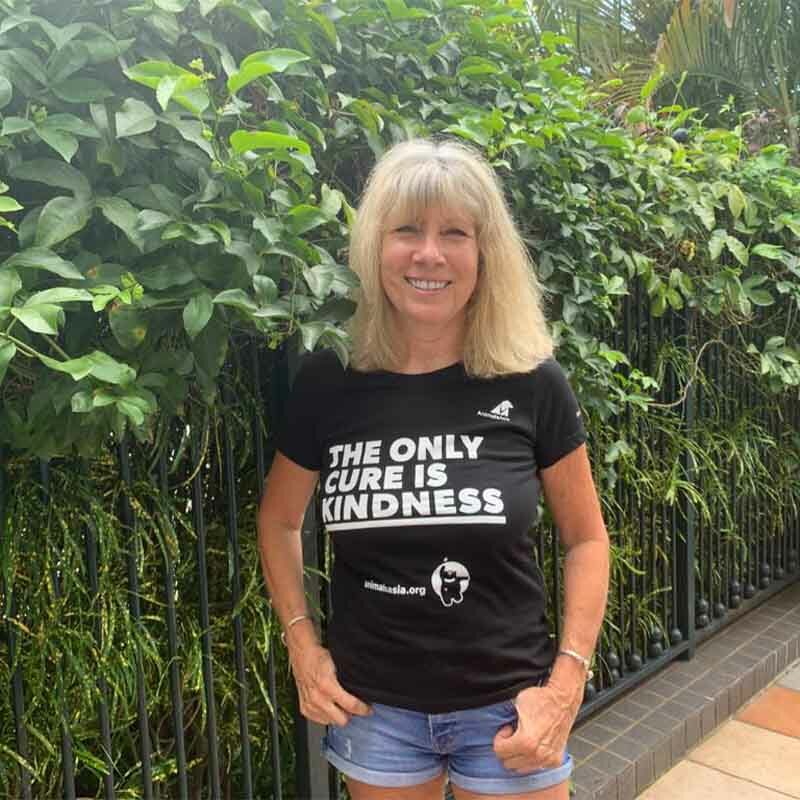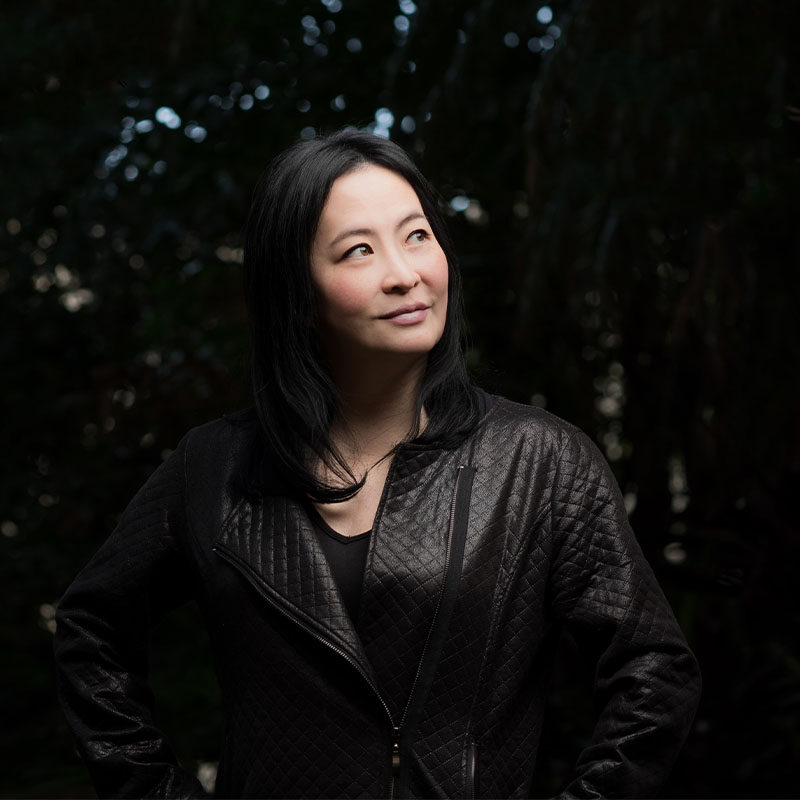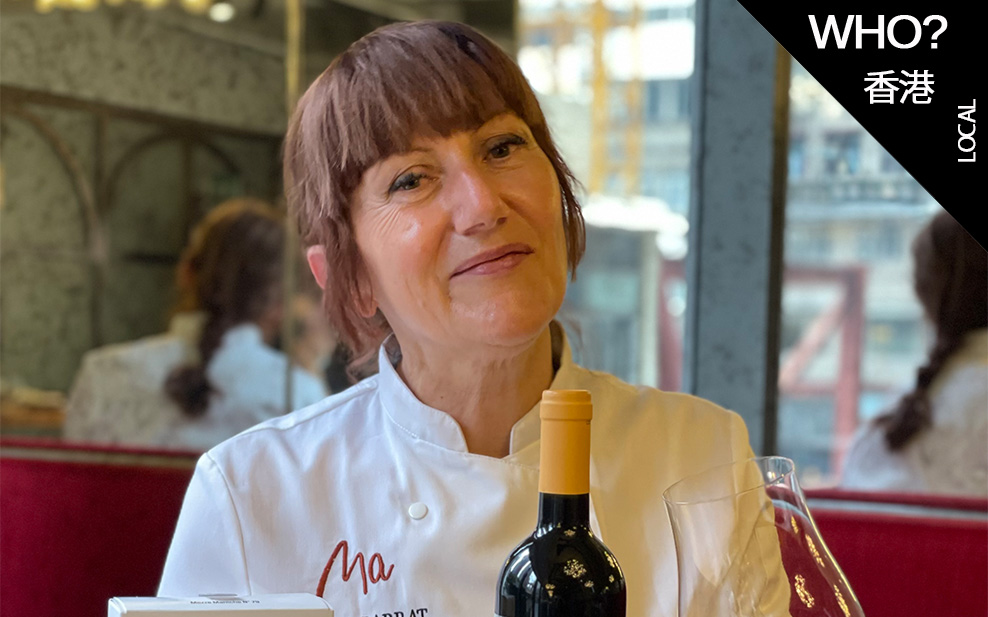
Tina Barrat: Vegan Cuisine Visionary
It’s lunchtime in a gourmet restaurant just off Graham Street in Central. You’re sitting at a varnished wood table with gilded cutlery when your first course arrives: a tin of ‘caviar’ flecked with gold leaf, served with blinis and sour cream on the side. The salty richness of the dish’s main component makes it delicious enough on its own. But taken with the spongy blinis and the thick, cool cream, eating it is more akin to an out-of-body experience than just lunch.
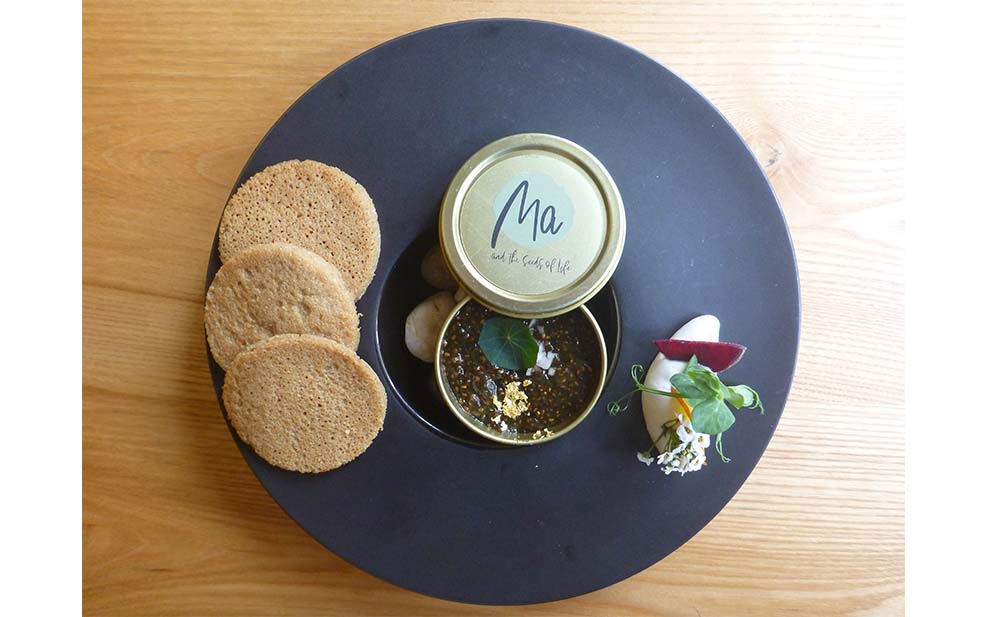
There’s a couple of twists to this meal that some may find surprising, however. The first is that it is entirely vegan, with no fish eggs nor any other animal products (the ‘caviar’ is actually made from chia seeds). The second is that even the most ardent meat eaters aren’t likely to care, such is the deftness with which it captures the essence of the real thing.
This seemingly impossible culinary feat, and the many others like it in this restaurant, is the creation of chef, Tina Barrat. Originally from France (like so many of the best chefs), Tina’s path to her current career was an unusual one. Juggling her twin loves of food and fashion, she initially went into the latter industry, moving to Hong Kong and becoming an accomplished designer. But while her fashion career eventually came to an abrupt close, the artistry and innovation it installed in her continued to serve her well in a successful culinary career.
Now, many years, two cafés and one restaurant later, Tina is a rising star in the local vegan community. Her restaurant, Ma…and the Seed of Life, offers a plant-based dining experience like no other in Hong Kong, refuting the myth that vegan food can’t be interesting or gourmet and stunning customers with its exquisite tastes, colours and textures. It has even managed to convert more than a few veganism sceptics to the diet themselves, thanks to its reinventions of classic animal-based dishes like the aforementioned ‘chia-var’.
In this WELL, WHO?, we share Tina’s story, revealing the interesting, sometimes unusual ways in which food and fashion have intertwined to make her into the unique, innovative chef she is today.
A Brewing Designer

Tina was born into a multi-generational household in Lyon in Southeast France, which strongly influenced her two main passions in life. Her grandmother was a seamstress who made dresses for local women, while her mother was an athlete who ensured both she and her daughter ate healthily. Meanwhile, her great-grandmother was a keen cook whose talents were renowned in the community. “She was very famous for cooking. When there was a wedding, she was called to cook at someone’s house for the wedding” Tina recalls fondly. “I was always with her in the kitchen and watching what she was doing.” Her hobby of collecting magazine clippings of colourful birds and other animals also sparked her great granddaughter’s artistic streak, as she would attempt to replicate these colours in art classes. Later in her childhood, Tina moved around a lot for her father’s journalism career, living in the cities of Biarritz, Reims (the champagne capital of France) and finally Montpellier.
When the time came to decide her career path, Tina at first struggled. Her parents were not convinced that her artistic interests could translate into a stable career and she herself had the same view of cooking. “I liked cooking, but I never saw it as a profession when I was younger.” To satisfy her parents, she decided to study law in Montpellier, but soon dropped out after finding both the course and its prospective career options unappealing. “The target was to end up maybe working for the government in an office. I was like ‘oh no, I don’t want that’. So after a while, I quit.”
After that, Tina enrolled in an art school in Montpellier where she excelled in hand paintings and jewellery making. Taking note of her talents, one of her teachers suggested that she study fashion and offered to help her get into a fashion school in Paris. For Tina, who until then had had no real idea of what she wanted for her future, this felt life affirming. “I became so excited” she says. “That’s the first time I was really passionate about something.” With help from her parents, she found a flat and paid her way into the fashion school. She performed so well that at the end of her course, a designer there offered her a job working on her knitwear collection. “This was how I started my career in fashion.”
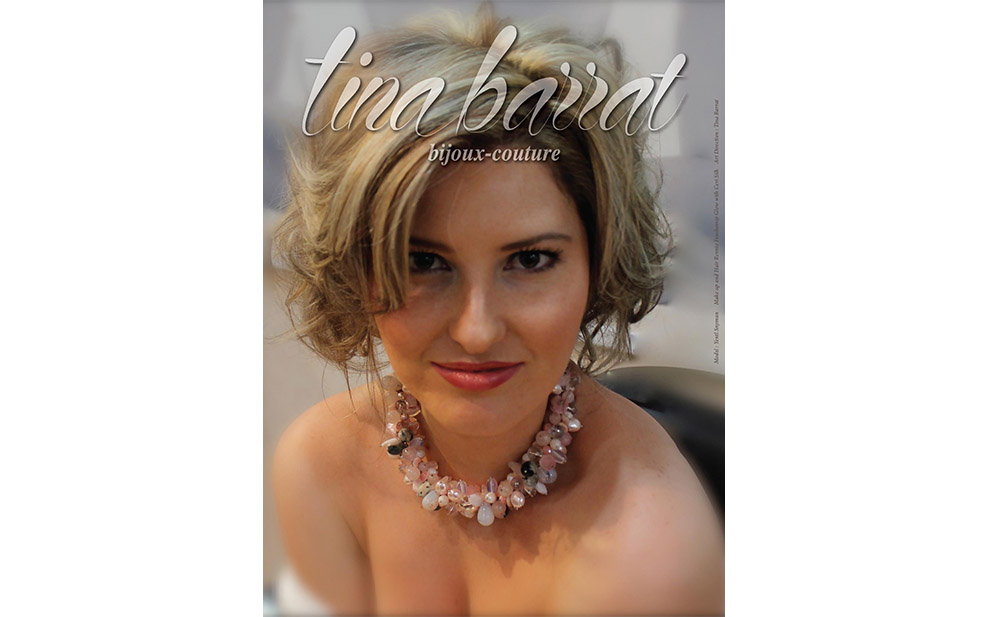
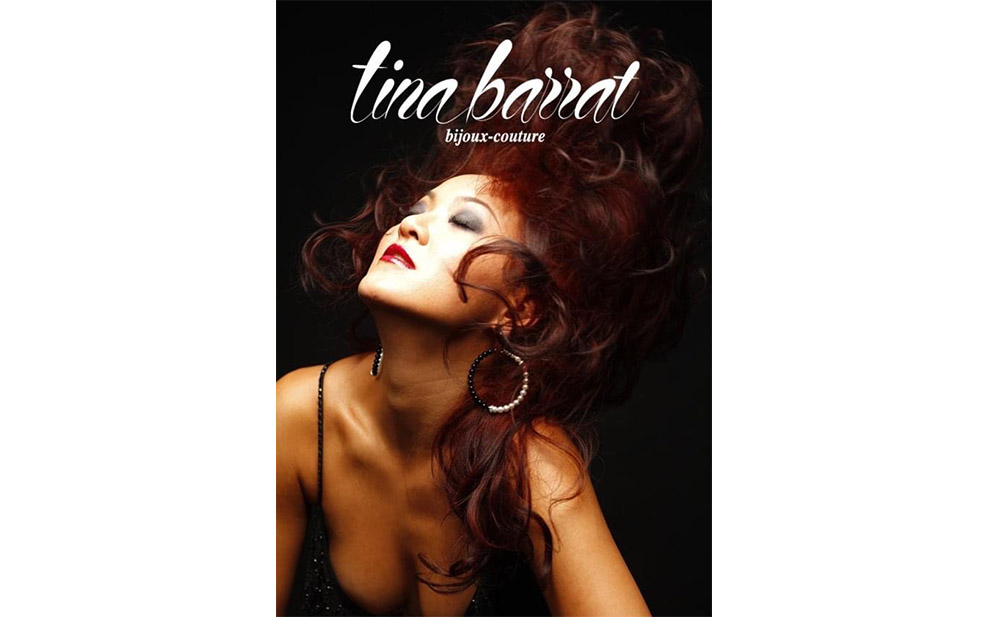
Tina’s fashion career got off to an excellent start when her first design for her new employer was featured in a magazine. She also worked with her to enlarge the studio they worked in to house more collections and to accommodate more designers to collaborate with. During this time, she often worked long hours and started changing her diet to meet the demands of her job. “I noticed that if I didn’t eat meat, I would have more energy” she recalls. “So I started reducing meat and going for fish and vegetables.”
Later, she met a client who worked in women’s clothing and was about to travel to Hong Kong to make a collection in Asia. On something of a whim, Tina offered to make it for him if she could come to Hong Kong too. “I have no idea why, but I felt like I had to go” she says. “It was this burning desire.” So in 1990, she boarded a plane and headed east.
Far Eastern Fashions
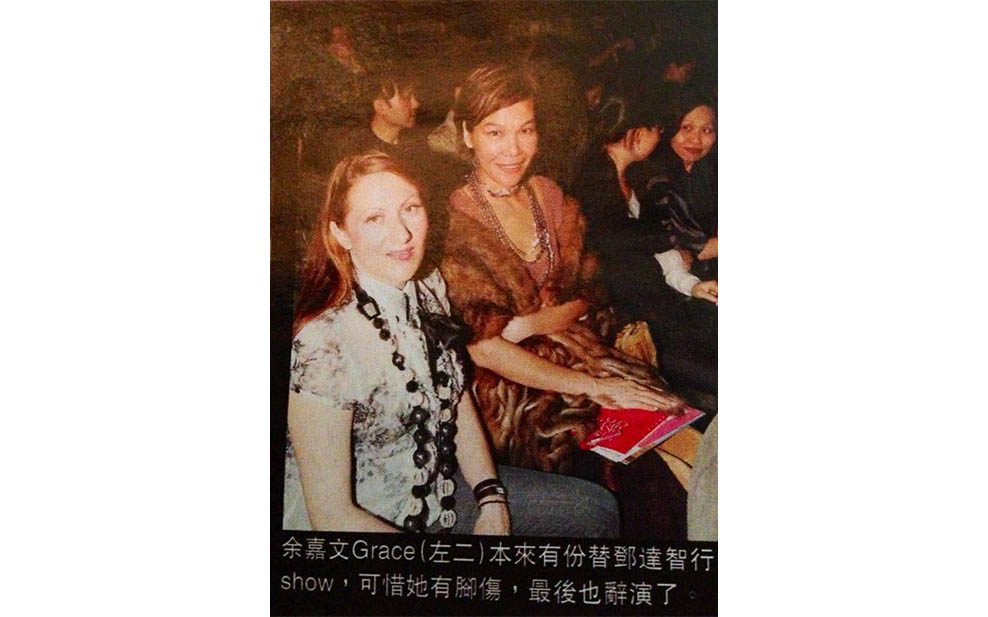
When Tina moved to Hong Kong, she instantly fell in love with the fast-paced lifestyle. In an echo of her semi-nomadic childhood, she travelled all over Asia (including China, Taiwan and India) for her job working on her client’s collection. Living in Hong Kong, she felt a much greater sense of freedom than she had before, to the point where she eventually decided to stay permanently.

After deciding not to return to France, Tina started her own career as a jewellery designer in 1998, which staying in Hong Kong proved very conducive to. “Hong Kong is really helpful to young designers” she comments. “You can have a booth, you can have a fashion show, you can have beautiful models at a very reasonable price.” For her first customer, she created jewellery straps for silk dresses and spent the next two years making a whole collection of them with him. Over time, she honed her skills in creating different colour combinations for collections and made a name for herself as brands like Lane Crawford started buying her jewellery. She also had an agent who was selling her collections in France.
Sadly, the 2008 financial crisis spelled the end of Tina’s fashion career, as brands everywhere started drastically cutting back on orders. With a much-reduced customer base, Tina found herself struggling to keep things afloat. “So many shops closed at that time. It was very tough” she laments. For a while, she was able to live from selling jewellery order-to-order, hoping that things would get better soon. But she eventually came to realise that this was not going to happen in the foreseeable future, and that she could not maintain this piecemeal existence indefinitely.
Eventually, Tina met a woman who liked her jewellery and the two of them decided to open a line of fashion shops. When looking for venues, they found one in Wan Chai with a small outdoor space at the back, which Tina proposed turning into a coffee shop. However, they soon discovered that they could either open a fashion shop or a food business in the venue, but not both. Surprisingly for people who had started out trying to build a fashion business, they decided to go with the latter.
“For some reason, we chose food. I don’t know why. It just happened like that” says Tina.
From Fashion to Food
In February 2013, Tina and her partner opened Maya Café in Wan Chai, one of just three plant-based eateries in Hong Kong at the time. While technically a vegetarian café, much of what it served were vegan dishes of Tina’s own design. One that she remembers particularly fondly is zoodles –pasta made from zucchini– with truffle sauce, which proved very popular with customers.
“Every weekend, we had a queue of people outside wanting to try my zoodles” she reminisces. “This is what I like in Hong Kong. People are very curious about the food. They are daring to try something new.”
Unfortunately, when the building the café was in was sold to new owners, their lawyer was able to force Tina and her partner out over contractual oversights, despite their contract having not yet expired. Lacking the means to challenge this in court, they had no choice but to go. “That was a total disaster” Tina laments. “It was not even two years that we were there for, and we were just starting to break even.” Later, they opened a second Maya Café in a newly opened shopping mall in Sheung Wan. However, the fallout from the mall’s early financial problems, along with rent and supply issues, soon forced the closure of that café too. Looking back, Tina blames the mall’s layout for the logistical (and subsequently financial) problems that sank Maya Café for good.
“That shopping mall never worked. It was very difficult to find the entrance” she says. “Even our suppliers could not find the entrance to deliver the vegetables.”
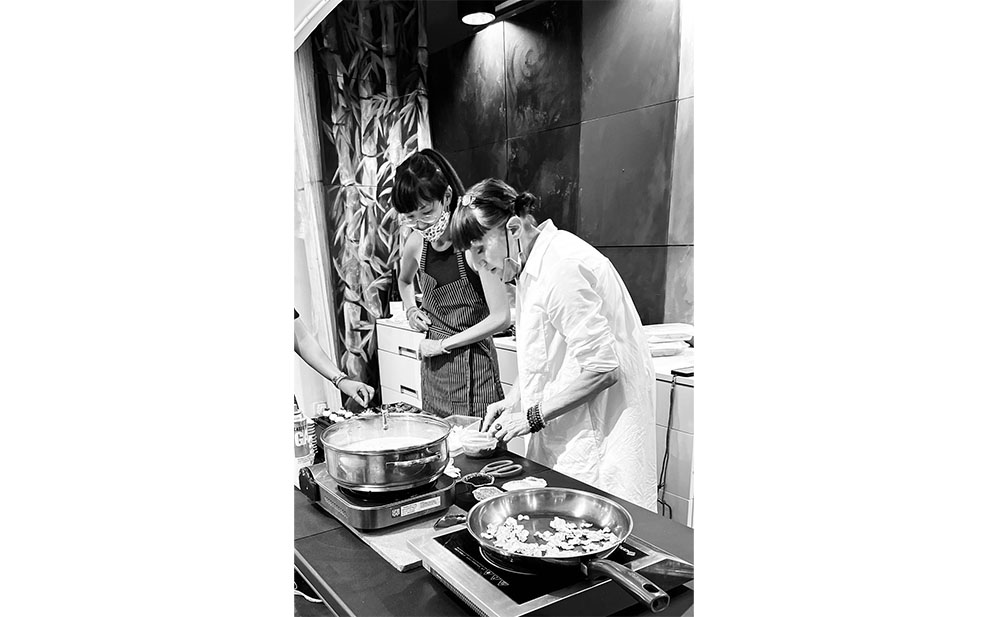
Disillusioned (for the moment) with the restaurant and café industry, Tina decided to take her culinary career freelance, doing pop-up dinners and home food deliveries. Fortunately, thanks to the good reputation and large following she’d gained through Maya Café, this proved a lot more lucrative than her freelance jewellery sales, allowing her to even travel to Bali and Kuala Lumpa to do pop-up dinners. Going freelance also allowed her more freedom to experiment with creating new dishes. “Every time I did a pop-up dinner, I would have something new. […] Most of the time I wouldn’t repeat a [dish].”
One day, Tina did a pop-up dinner for the boss of a friend of hers. Among those in attendance was the owner of the OBH group, who was so impressed by Tina’s cooking that he and some others proposed opening a vegan restaurant with her. She agreed on the condition that she be allowed to regularly invent her own recipes. After being shown several venues by an agent, she eventually chose one on Graham Street for its relaxed vibes and large windows offering natural lighting.
And so, Ma…and the Seed of Life was born.
Artiste Culinaire
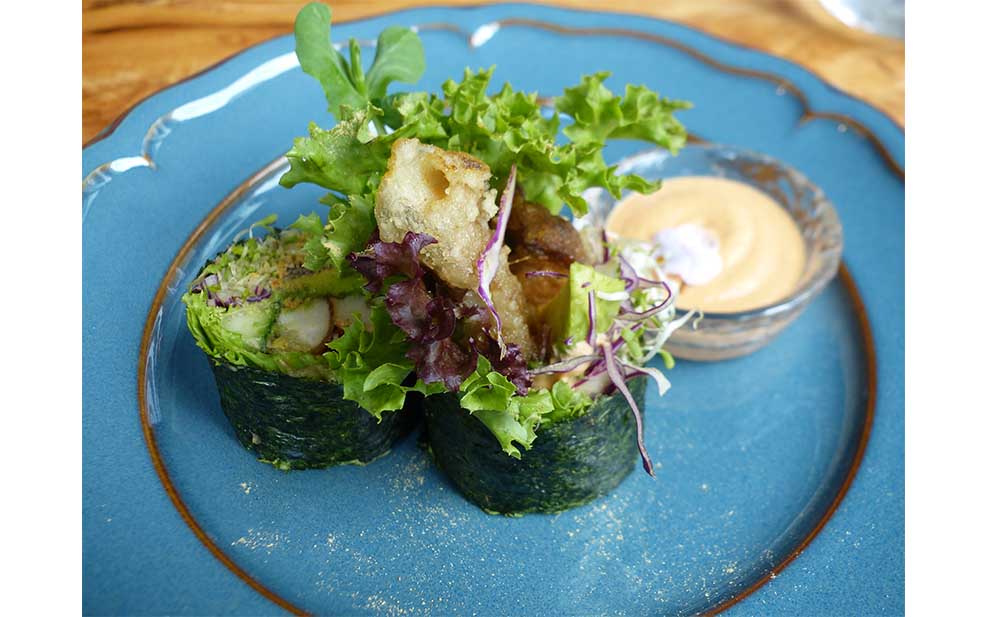
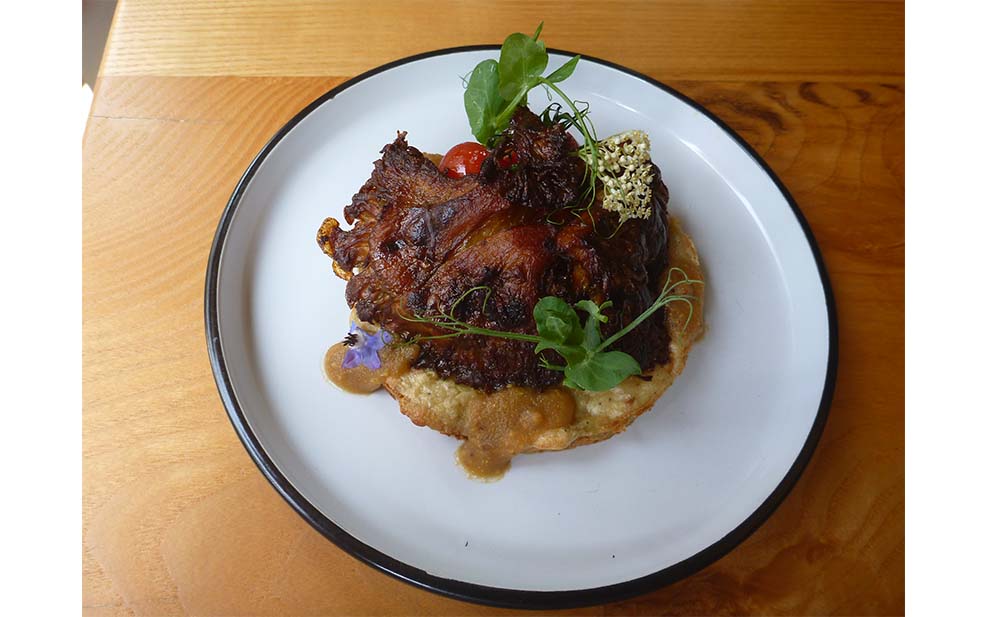
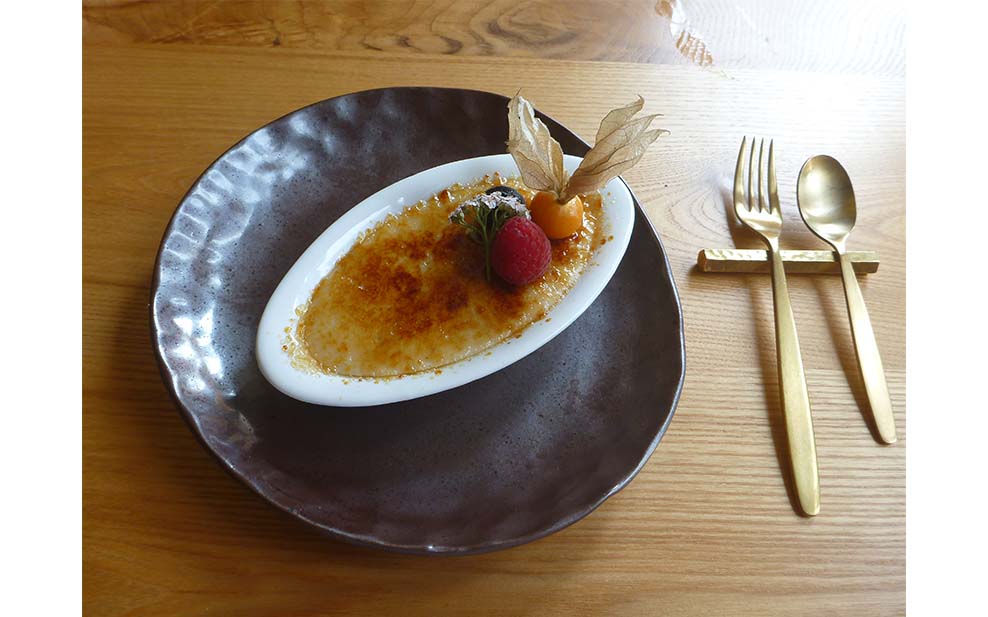
From as early as her Maya Café days, Tina’s culinary career has been defined by her creative instincts. The same eye for colour combinations that served her so well in making jewellery has also served her well in creating recipes, as has an almost computer-like memory for scents and flavours. “My sense of smell [and taste] is very strong” she says. “When I taste something, I remember it. It’s like creating a perfume” she jokes. These two strengths allow her to identify the right ingredient combinations to recapture the taste, texture and appearance of a dish. As far as she’s concerned, it’s no different to assembling the right combinations of colours, fabrics and jewels for a fashion piece. When you do a dish, you [need] to choose your key ingredients: the shape, the colour, the size, the texture. […] You have to make all the ingredients sync together to create some harmony. It is the same creative process.”
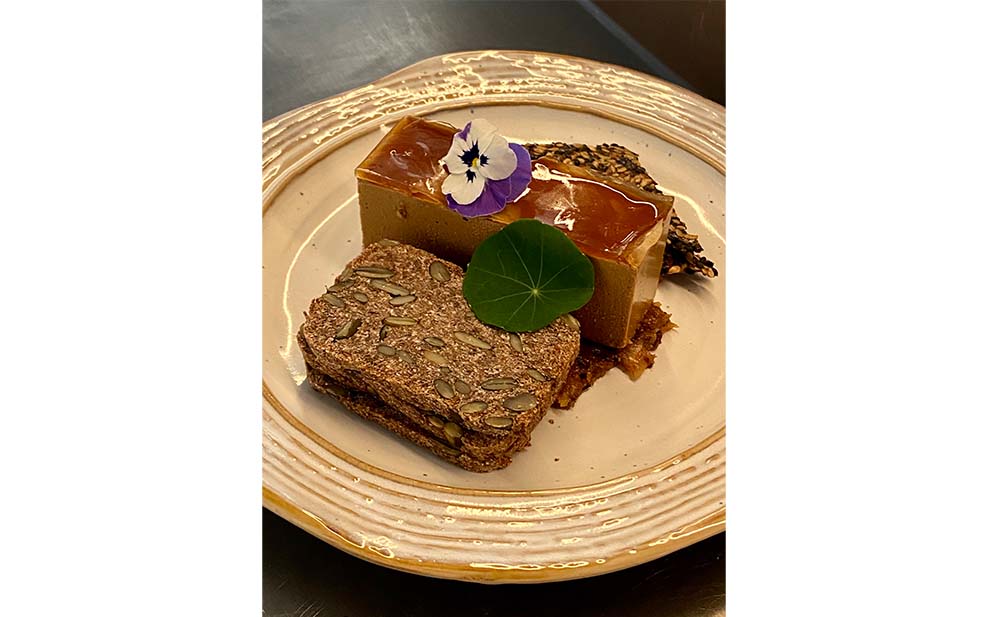
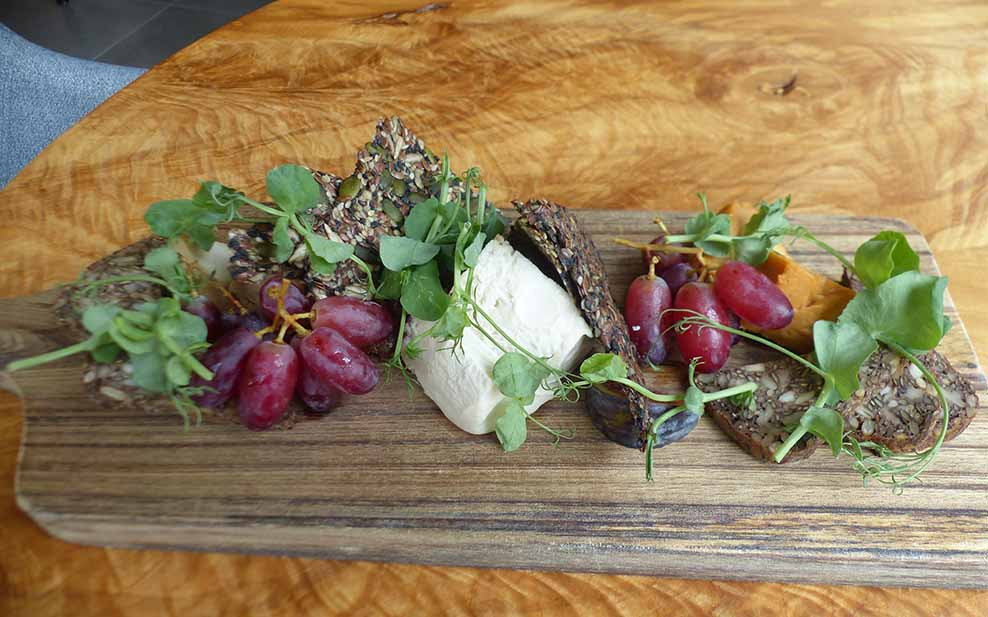
Some of the dishes served at Ma…and the Seed of Life are re-imaginings of animal-based dishes, for instance, Tina’s plant-based foie gras (‘faux gras’). This started as a mushroom paté recipe of her mother’s, which while very similar in texture to foie gras, lacked its taste and colour. To address this, she added sundried tomatoes to the mix and found that not only did the result better match the colour of the real thing, but miraculously, also its taste. Similarly, the taste of her famous plant-based camembert cheese (‘shamembert’) is achieved by mixing truffle oil with fermented cashew nuts.
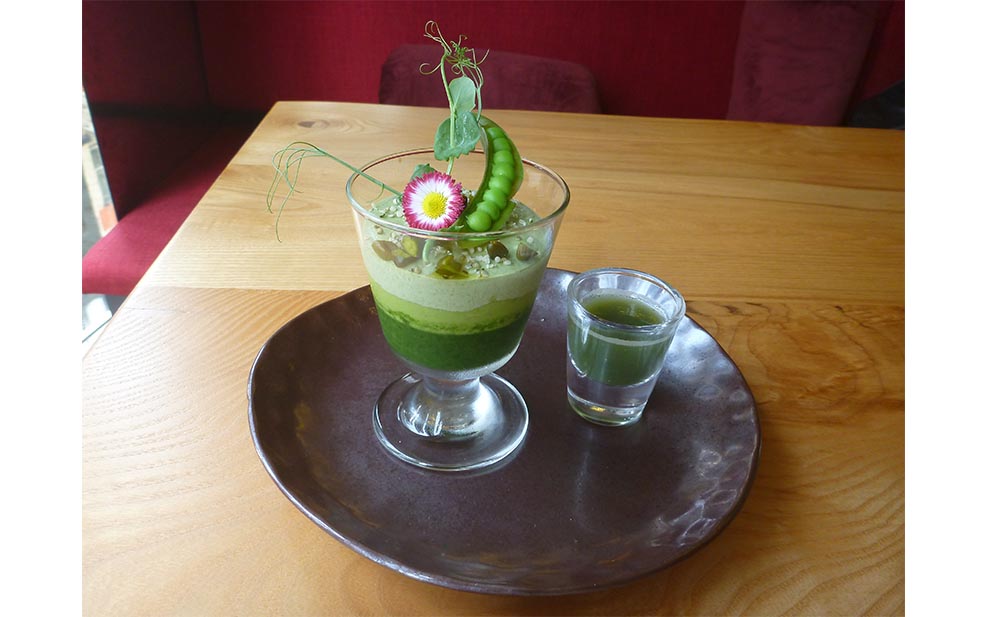
However, most of her dishes don’t try to replicate animal-based foods, but rather sell themselves on being unabashedly plant-based. Her cold spinach terrine is a delightfully creamy mousse bursting with the tastes of fresh herbs and vegetables, without a single egg or dairy product to it. Tasting food like this, it’s hard not to marvel at Tina’s ingenuity. Nor is it hard to see why so many meat eaters have been perfectly happy to eat it too. “People have this idea that being vegan is just eating salad like a rabbit. But actually, it can be very sophisticated. If you are satisfied, if the texture is right, if the taste is right, you don’t need meat.” For some, eating at Ma…and the Seed of Life has even been a catalyst for more long-term diet change.
“Everybody always tells me the same thing: ‘[If] this is vegan food, I can eat vegan every day’” Tina remarks proudly. “They come back to me and say “I’ve started to eat less meat. I feel so much better.”
The Next Course
The restaurant industry has suffered a lot due to COVID-19 and vegan restaurants in Hong Kong especially so. In the past year alone, long-time favourites like Mana and Pop Vegan have seen their doors close and at several points, it seemed as if Ma…and the Seed of Life might share that fate. Ever since the onset of the pandemic, the restaurant has been through multiple months-long closures, with one of the most difficult being during the COVID surge of Chinese New Year, 2022. Even when cases have receded, tempting wary customers to start eating out again has been difficult.
“This year has been very, very tough. Even after we re-opened in April and opened for dinner, people didn’t want to come out” bemoans Tina. “We are lucky that the rental here is not too high.”
Fortunately, thanks to that reasonable rent (and a very good deal of luck), Ma…and the Seed of Life remains open for lunch and dinner reservations. And with things finally seeming to calm down, Tina can now direct her energies into her next culinary endeavour. Currently, she is partnering with a local business to experiment with their microalgae powders as taste enhancers. “When you look at the chemical composition, it’s actually very close [in taste] to crab” she says of one of the powders. She is also finishing up her very first cookbook, which is due to be released in a few months.
“At the end of the day, I’m really an artist” she says of herself. “Even if it’s hard work creating recipes, staying up late; I don’t mind, because this is my passion.”
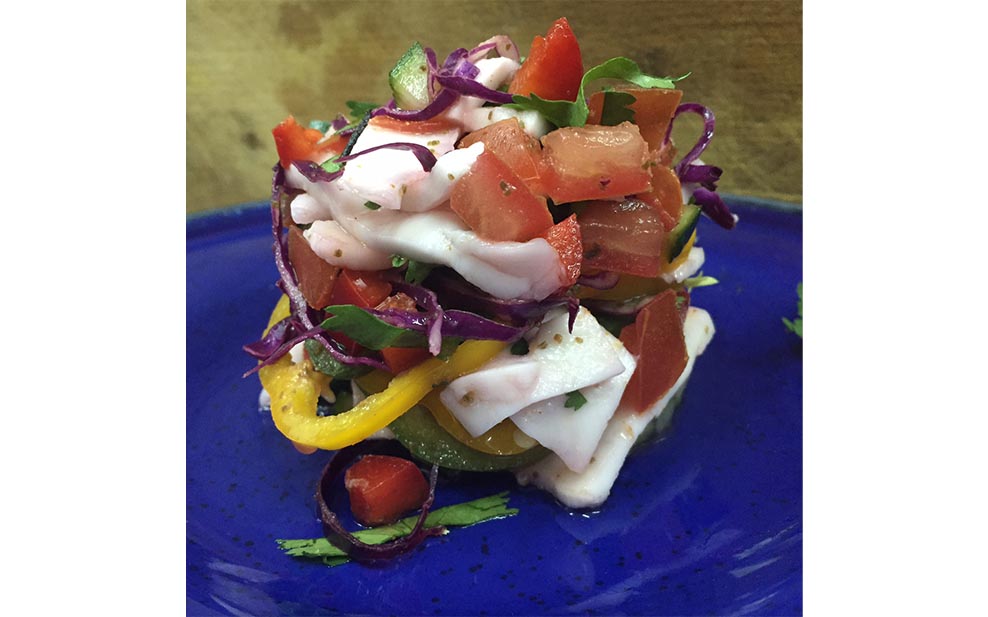
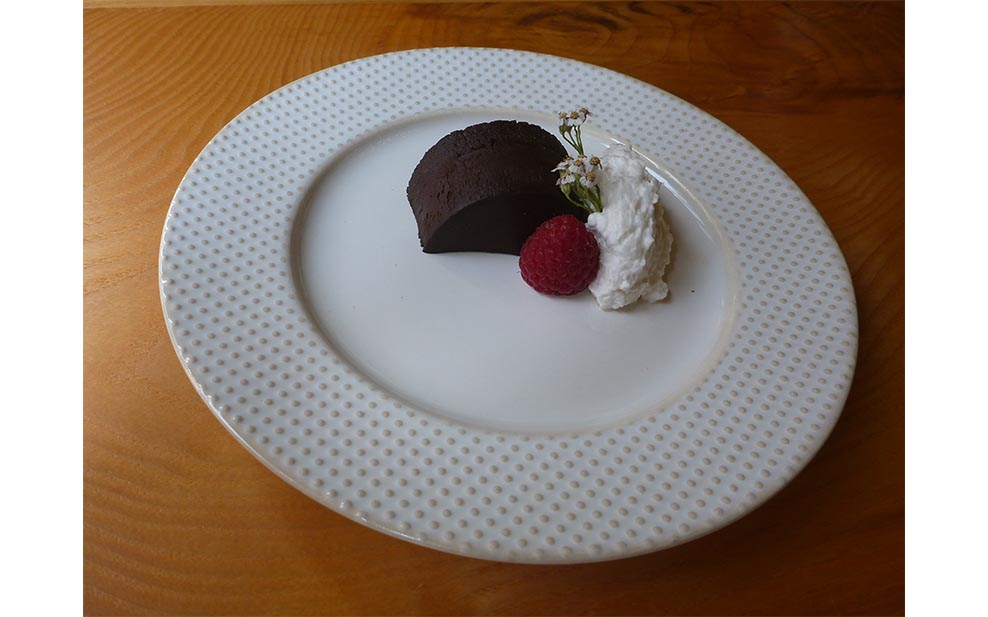
Regarding plant-based eating in Hong Kong as a whole, she feels there is still a long way to go before such diets become mainstream, but is encouraged by the growing popularity and availability of plant-based meats (even if she doesn’t use them herself). For her part, she believes in taking a non-confrontational approach to changing meat eaters’ minds and promoting vegan eating. “I’m not pushing anybody to change. I’m just showing that they can have something different and that it can be fulfilling. […] This is the way I can say that I’ve contributed.” As for her own success, she attributes it to both the effort she puts into her dishes and the honesty with which she presents them.
“Since 2013, I have had people following me from one place to another place, from pop-up dinner to pop-up dinner” she says. “It’s because I never cut corners. I’m very true to what I cook. I use the best ingredients I can and I put all my love into it. I don’t try to pretend it’s something it’s not. I think people can feel that and I can share my love [for the food] with them.”
As the environmental and health benefits of plant-based eating become increasingly common knowledge, demand for plant-based restaurants like Ma…and the Seed of Life is likely to increase, as too may societal pressure to adopt a plant-based diet. For many, making such a dietary shift can be very challenging, even intimidating. But to those who are struggling with this, Tina’s advice (as a former meat eater herself) is to do it at a pace that is comfortable and sustainable for you. “Don’t stress yourself. Just go slowly and change whenever you can.” As for those looking to make a career in plant-based cooking themselves, her advice is this:
“Don’t think of [it] as a way of making money. Just do it because you like it and you really feel it from the bottom of your heart.”
Finally, here are a few quickfire questions and answers to help you get to know Tina better. We asked her to say the first thing that came to mind when we said the following words. Her responses are in italics.
- Plant-based eating: Unprocessed, Healthy, Nutritious
- Cooking: Cooking up a storm
- Restaurant: Fine Dining
- Fashion: Butterflies in my stomach
- France: Fresh produce
- Hong Kong: My Love
- Purpose: Catalyst
- Hope: Michelin Star
- Future: A Larger Place with an Outdoor Area
Written exclusively for WELL, Magazine Asia by Thomas Gomersall

Thank you for reading this article from WELL, Magazine Asia. #LifeUnfiltered.
Connect with us on social for daily news, competitions, and more.
